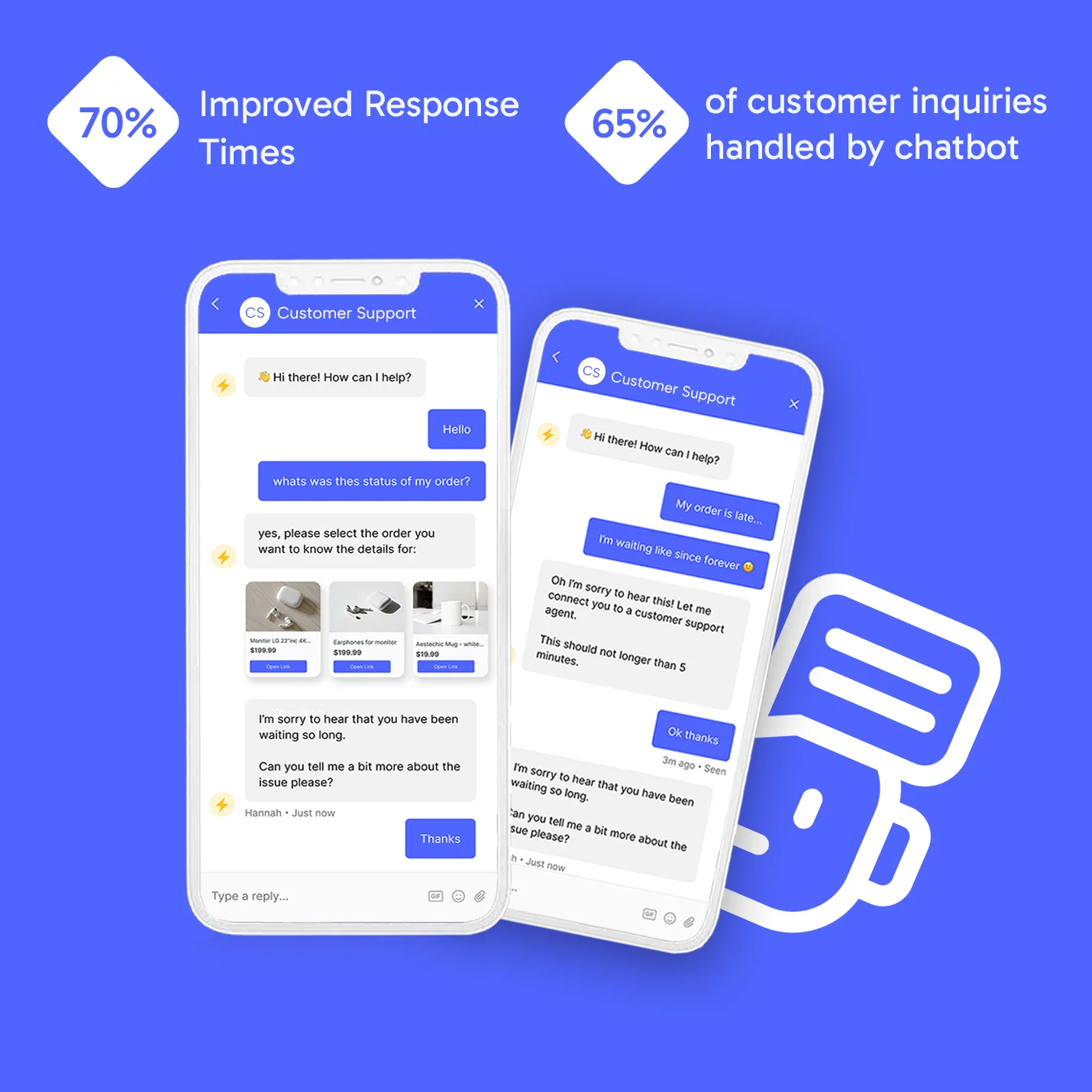Introduction
ShopEase, an emerging leader in the e-commerce industry, experienced rapid growth over the past year with a user base exceeding 500,000 active users per month. As a platform dedicated to user experience and customer satisfaction, ShopEase recognized the need to scale its customer service operations to meet the increasing demands of its clientele.


The Challenges
- Volume of Inquiries: With the influx of users, ShopEase’s support team grappled with over 30,000 customer inquiries each month. This massive volume strained resources, leading to increased response times.
- Repetitive Queries: A significant portion (around 40%) of these inquiries revolved around common topics – order tracking, returns, refund and product details.
- Customer Satisfaction: Delayed response times, coupled with the inability to provide instant resolutions, started impacting customer loyalty and trust.
- Operational Costs: Hiring and training more human agents to cope with the growing demand was financially unsustainable.
The Solution
- Data Analysis: ShopEase began by analyzing six months’ worth of customer support logs to categorize and prioritize queries.
- ShopBot Introduction: Leveraging AI, ShopEase introduced “ShopBot”, a 24/7 chatbot trained to handle the most frequent customer inquiries.
- Integration: ShopBot was not just a standalone tool but was integrated into ShopEase’s core system. This allowed it to access real-time order statuses, product availability, and more.
- Human-Agent Collaboration: Complex queries that ShopBot couldn’t handle were seamlessly transferred to human agents, ensuring customers always received accurate answers.


The Result
- Efficiency: ShopBot’s introduction improved response times by 70%, providing almost instantaneous answers to common questions.
- Cost Savings: By autonomously handling 65% of customer inquiries, ShopEase reduced the operational costs associated with its support team by half.
- Customer Satisfaction: Post-implementation surveys showcased a significant uptick in customer satisfaction, with praise directed towards faster and consistent resolutions.
- Team Morale: The reduced workload allowed human agents to focus on more complex, value-added interactions, leading to higher job satisfaction.
Technology Stack
Natural Language Processing (NLP)
ShopBot used advanced NLP algorithms to understand and process user queries in real-time.
Cloud Infrastructure
Leveraging cloud platforms ensured high availability, scalability, and reliable performance even during peak traffic.
Integration Middleware
Tools like Apache Kafka ensured real-time data exchange between ShopBot and the core ShopEase platform.
Database Systems
MongoDB and MySQL were used for structured and unstructured data storage, respectively.
Analytics and Monitoring
Platforms like Tableau and Grafana provided insights into ShopBot’s performance, helping in iterative refinement.
Deep learning
Learn the possibilities of Deep Learning in transforming AI Video Analytics for retail businesses. Neural networks make it possible to detect objects and analyze behavior more accurately to improve security and customer data.
Generative AI
Generative AI is revolutionizing retail stores through AI Video Analytics with the creation of synthetic data and improving the method of anomaly detection, it helps to optimize work, and establish a closer connection between companies and customers.
Reinforcement Learning
Reinforcement Learning is affecting AI Video Analytics in retail by improving tactical activities. Learning new approaches and using them in decision-making improves overall operations and customer satisfaction while also indicating real-time response.


